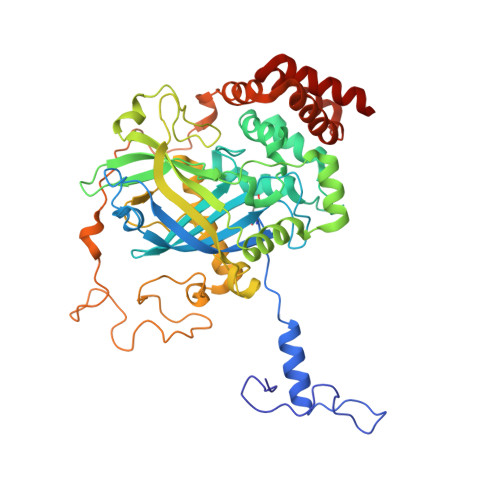Crystal structure of Proteus mirabilis PR catalase with and without bound NADPH.
Gouet, P., Jouve, H.M., Dideberg, O.(1995) J Mol Biol 249: 933-954
- PubMed: 7791219
- DOI: https://doi.org/10.1006/jmbi.1995.0350
- Primary Citation of Related Structures:
1M85, 2CAH - PubMed Abstract:
A catalase from a peroxide resistant mutant of Proteus mirabilis binds NADPH tightly. Interestingly, this enzyme can be stripped of NADPH without loss of the catalatic activity. It is the only known non-mammalian catalase able to bind NADPH. The structure without cofactor was solved by molecular replacement using the structure of beef liver catalase as a model. The structure was refined to an R-factor of 19.3% in the range 8 to 2.2 A resolution. According to the sequence, a methionine sulphone was positioned in the haem active site. This oxidized form of methionine is particular to Proteus mirabilis catalase and likely to produce some steric hindrance in the active site. Two important water molecules are positioned in the haem distal site. These two water molecules are not located in the structure of beef liver catalase, but are supposed to account for the catalytic mechanism. The liganded form was obtained by soaking crystals of the unliganded form into an NADPH solution. The structure was refined to an R-factor of 15.9% in the range of 8 to 3.1 A resolution using the unliganded structure as a model. The NADPH was clearly located in the electron density map with the same conformation as in beef liver catalase. The NADPH binding induces slight structural changes. However, the imidazole ring of a histidine residue (His284) rotates about 50 degrees to accommodate the cofactor. The electron transfer from NADPH to the haem molecule was examined and several pathways are proposed.
Organizational Affiliation:
Institut de Biologie Structurale Jean-Pierre EBEL 1LCM, Grenoble, France.


















